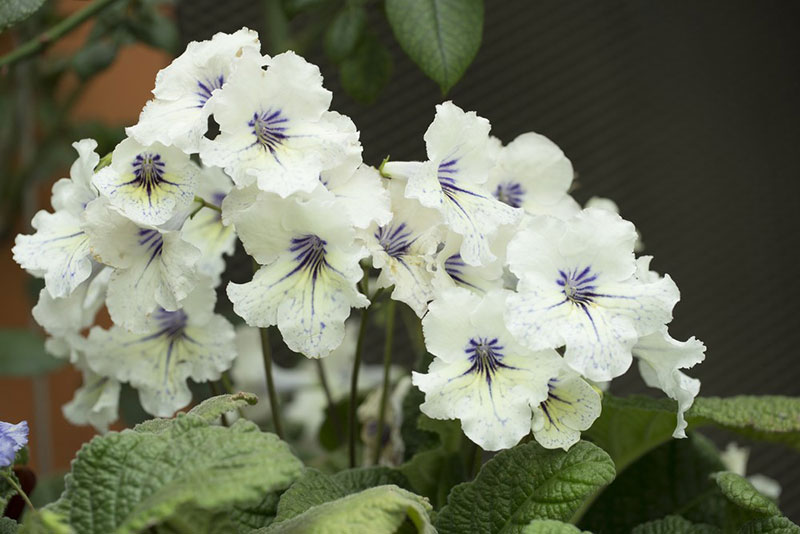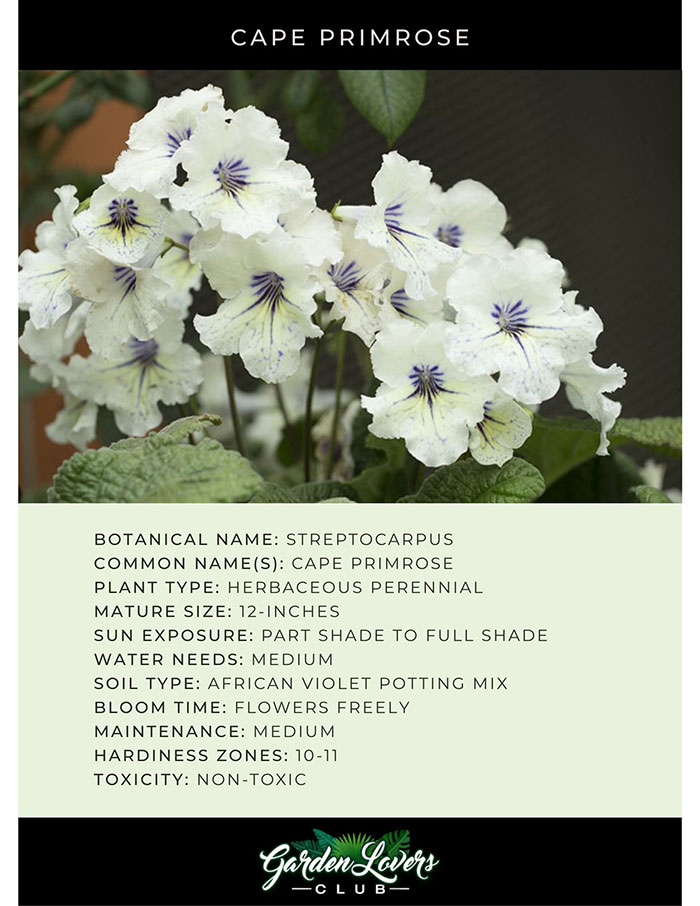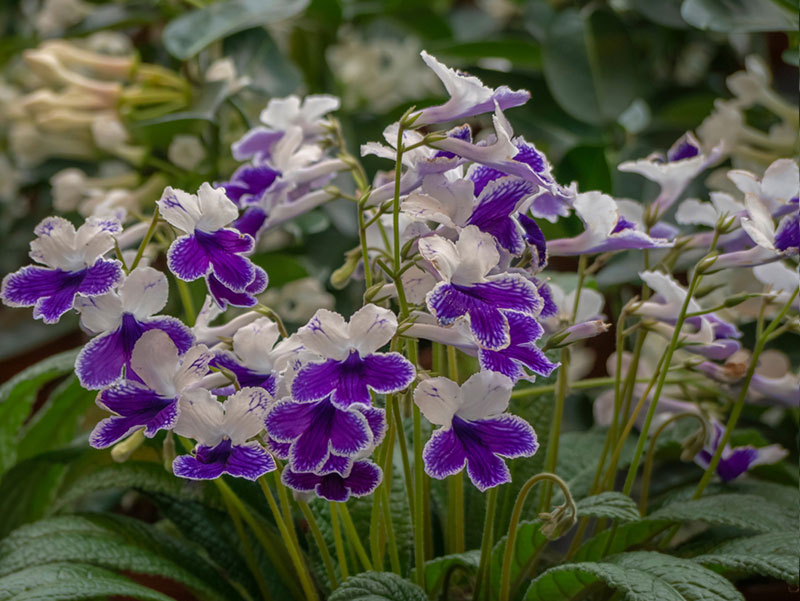The Streptocarpus, also known as the Cape Primrose plant, is a delicate evergreen hybrid featuring velvet flowers and striking, deep-veined leaves.
As a relative of the African violet, the Cape Primrose keeps in bloom for several months of the year when treated properly and exposed to ample indirect lighting.

A Cape Primrose plant reaches a height of 12 inches and spreads up to 18 inches. Best grown in USA plant hardiness zones 10 through 11, the Cape Primrose is a lively, beautiful plant with robust flower stems supporting vibrant, colorful blooms in several shades of violet and complementary colors like lavender.
Water and Soil Requirements
As a delicate perennial, the Cape Primrose should be watered enough to carefully wet its roots, but not enough to produce soggy soil. The roots are quite sensitive to moisture overages, and too much water will likely cause root rot and damage the plant. If the leaves wilt and become discolored, you’ll know that you’ve used too much water.
Reduce watering frequency in the colder months of the year, but maintain at least slight a bit of moisture in the soil.
The Cape Primrose is best kept in the same potting mix as the African violet, and soil should never become completely dry during any point of the year.
| Origin: | South Africa |
| Botanical Name: | Streptocarpus |
| Light: | Indirect light. East-or west-facing window is ideal. |
| Watering: | Water whenever the top 2 inches of potting mix feels dry. Reduce watering in winter. |
| Soil: | African Violet Potting Mix |
| Temperature: | Moderate temperature of 55- 70° F | 13-21° C |
| Height: | up to 12 inches |
| Spread: | up to 18 inches |
Light and Temperature Requirements
The Cape Primrose loves bright light, but exposure to direct sunlight can damage the delicate leaves, so indirect and sunlight filtered through curtains works best.
Fluorescent lights are another viable option, but always use natural sunlight when possible.
Humidity Requirements
The Cape Primrose is best kept in moderate-humidity environments throughout the year.
Foliage should be gently sprayed with a water mister to supply a constant source of moisture for the leaves.
To further maintain moisture, keep the Cape Primrose away from sharp forms of draft or other desiccants.

Fertilizer Requirements
Supply the Cape Primrose with high-quality phosphorous-heavy fertilizer twice per month in Spring and Summer. Though you have many choices of fertilizer, African violet fertilizer will work perfectly.
Make sure to moisten the soil before applying fertilizer, as the Cape Primrose may suffer fertilizer burns if the soil is not properly wet beforehand.

Propagating The Cape Primrose
Fortunately, when it comes to flowering plants, Cape Primrose is incredibly easy to propagate.
During Spring season, simply select a batch of healthy-looking leaves and delicately cut from as close to the base of the plant as possible. The best leaves for cutting are those which display a deep green color and appear to be vibrant and well-nourished.
Although it’s possible to propagate the Cape Primrose with leave cuttings taken during the late Spring to early Summer, early-to-mid Spring is best.
Instructions To Repot
Repotting the Cape Primrose works best by transferring as much of the previous potting mix as possible. The plant is quite resilient, so even if a few of it’s roots are detached, owners will find the new pots filled with replacement roots.




